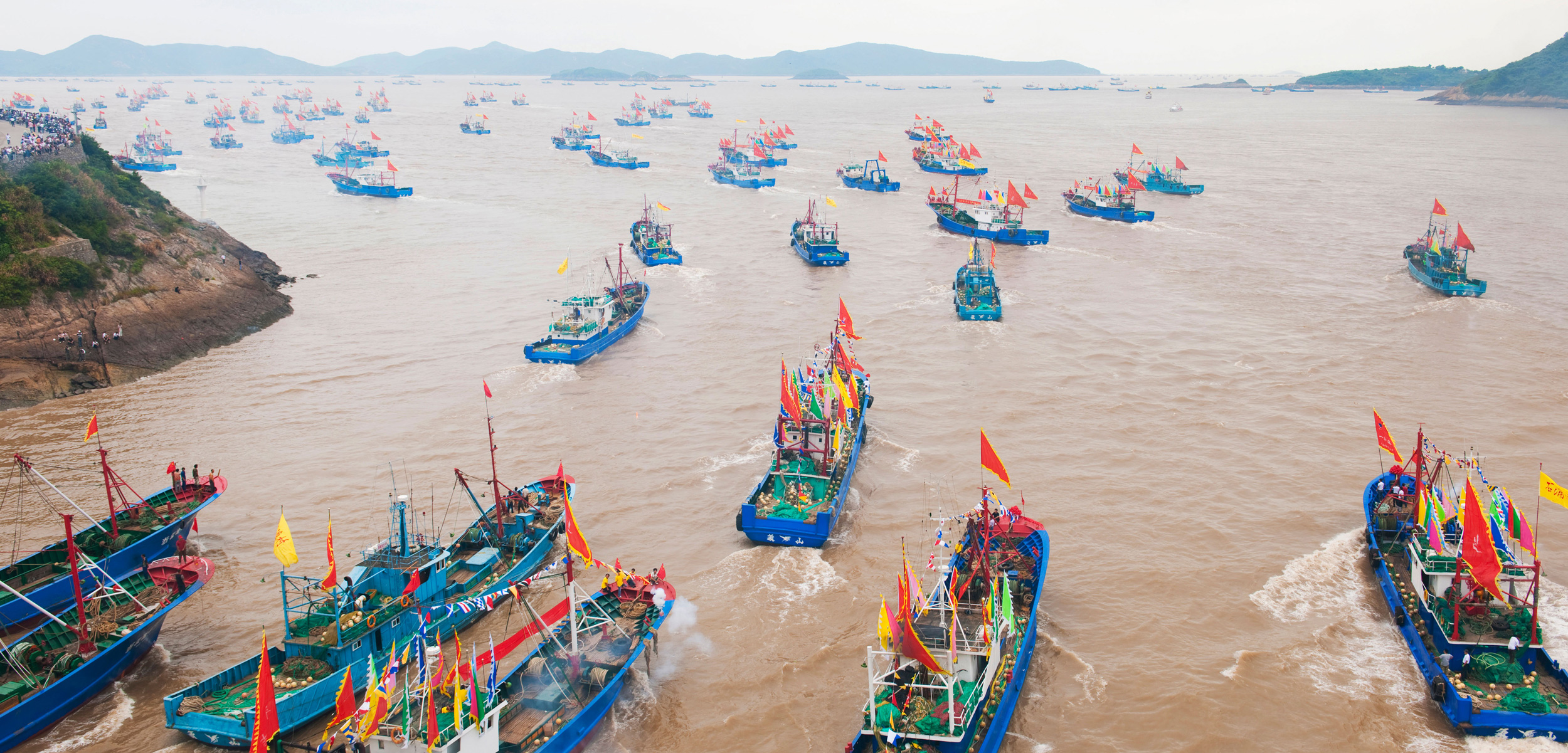Is China’s Hands-Off Approach to Fisheries Producing More Fish?
China’s fishers indiscriminately target predators as well as prey, putting different pressures on the ecosystem.
Article body copy
China, the world’s largest seafood producer, has a reputation for being a fish vacuum, its trawlers sucking up nearly 15 million tonnes of fish annually, many of which are illegal, unreported, and unregulated (IUU) fish caught off the West African coast and elsewhere. Yet for the past 20 years—despite minimal management and some of the most intensive industrial fishing in the world—China has purportedly maintained high catches of key species in its own backyard, the East China Sea.
The rosy reports documenting China’s unusually resilient fisheries have long been suspect. University of British Columbia fisheries scientist Daniel Pauly concluded in 2001 that Chinese reports of continuously high catches were basically bureaucratic lies. Others suggest that China inflates its landing numbers with IUU fish caught elsewhere.
Yet a new study from researchers at the University of California, Santa Barbara’s Sustainable Fisheries Group has modeled another possible explanation for China’s impressive catch data: its indiscriminate approach to fishing takes species from throughout the food web, including predators.
Killing predators allows prey numbers to boom and, much like how deer populations have exploded in the United States since humans extirpated wolves from much of their range, this approach has allowed fish species lower on the food chain to retain high numbers. And because predators typically need to eat 10 kilograms of prey to add one kilogram to their own weight, fishing out predators tends to increase prey catches by much more than it reduces predator catches, the study authors say.
Lead author Cody Szuwalski acknowledges that China’s management approach has had a negative impact on biodiversity. But using an ecosystem model, he was able to calculate how a reduction of large predatory fish increased the populations of smaller fish, replicating China’s stated harvests for the 11 species that make up 95 percent of its claimed fishery.
China’s indiscriminate harvesting differs from that of North American and European countries, most of which practice single-species management. Those countries set harvest limits for each targeted species to prevent overfishing, and establish plans to rebuild depleted species as quickly as possible. This approach is not perfect, but it has shown significant success: the United States has rebuilt 39 species to sustainable levels since 1996, when it passed the Sustainable Fisheries Act.
Advocates of science-based fisheries management say China’s 20-year record of strong harvests is not long enough to conclude that what they are doing is sustainable.
This is the argument of Sean Barrett, cofounder of New York-based Dock to Dish, a community-supported fishery. He points to the experience of the United States, which industrialized its fisheries after the Second World War.
“You see this extraordinary spike—atmospheric landings as the fleet industrializes,” says Barrett. “But then we saw one species collapse after the next in the 1970s and ’80s.”
China is also on an industrial trajectory, but started a few decades later, he says. “Now they’re at their peak, their heyday, and what comes next is collapse.”
Szuwalski disagrees. He says China’s fishing pressure is exponentially higher than that of the United States, with many more boats in about one-third of the area. If its fisheries were set to collapse, therefore, they should have done so far sooner. But China seemingly hasn’t reached peak fish—yet.
It’s going to crash sometime, says Carl Safina, an ecologist, writer, and director of the Safina Center, a conservation organization. Safina has worked to reform both US and international fishing laws. “I don’t see how this can go on forever by taking more and more. It doesn’t make sense,” he says.
Szuwalski acknowledges that China’s approach—which is similar to that of other Asian countries such as Indonesia, Thailand, and the Philippines—has downsides, such as degrading ecosystems and lowering biodiversity. In fact, Chinese fisheries managers are beginning to ask for international advice, so “they clearly think there is reason to change,” says Szuwalski.
But if they follow the US practice and implement single-species management, their catches will decrease, according to Szuwalski’s model. That’s because single-species management in effect creates extra competition for fishers, says Szuwalski. Allowing some fish to grow larger means more big fish eating more of the fish that humans also target.
And lower catches could result in backlash against reform, he says. Szuwalski emphasizes that he and his coauthors are not touting China’s approach as desirable, they’re merely documenting it as a prelude to offering advice. Thinking through the likely social impact could push advisers to come up with a modified approach that might ultimately be more successful on environmental and social fronts, he says.
Nevertheless, Safina is “concerned that this paper may give the impression that it’s a valuable thing to destroy all the large fish in the sea and turn the ocean into a small-animal human feedlot.”
Aside from the ecological impact, the Chinese approach is merely putting off the day of reckoning, Safina says. “You can’t get more and more by fishing harder and harder forever.”

